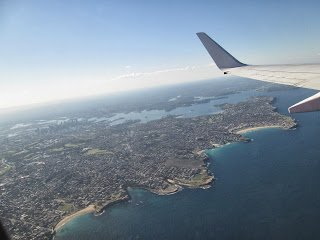Another of my program notes:
Richard Wagner (1813-1883)
The
Flying Dutchman: Overture (1860)
Pursued by creditors, the 26 year-old
Richard Wagner and his wife Minna fled for London in 1839 from Riga in Latvia,
where he’d been music director. Their ship, the Thetis, was battered by storms and took shelter in a Norwegian
cove. There, said Wagner in his memoirs, the idea for his fourth opera, The Flying Dutchman, took root. Listening
to the overture’s stormy opening you could believe this. The real inspiration
for the opera however, may have been Heinrich Heine’s The Recollections of Herr von Schanbelewopski (1834), which contains
a version of the Flying Dutchman
tale.
The
Flying Dutchman concerns the old legend of a ship’s
captain (the Dutchman) and his ghostly crew, condemned by a curse to sail the
seas unless, and until, the Dutchman can
find the redeeming love of a selfless woman. In Wagner’s opera, that woman is
Senta, who sacrifices her life to save the Dutchman’s soul. The overture was
written in November 1841, after the rest of the opera. Rather like the
overtures of Weber whom Wagner admired, it foreshadows the opera’s concerns in
its juxtaposition of tempestuous passages, the pacifying effect of ‘Senta’s
Ballad’ (cor anglais solo) and the dance-like middle section based on the Scene
7 chorus, ‘Steuermann! Lass die Wacht!’ which Wagner claimed to have been suggested
by the calls of the Thetis’s crewmen
echoing round the Norwegian cove’s granite walls.
The
Flying Dutchman was the earliest work that Wagner later
acknowledged as part of his canon. Senta was the first of the ‘redeemer heroines’
he portrayed, and although Wagner was still decades away from the Music Drama
with which he changed operatic history, The
Flying Dutchman points the way to those operas in its dramatic sweep and insight
into human motivation. It still features a stand-alone overture of course, but
that overture is a superb example of 19th century nature
portraiture.
Gordon Kalton Williams, © 2013
This note first appeared in program booklets of orchestras associated with Symphony Services International (http://symphonyinternational.net/). Please
contact me if you would like to reprint this note in a program booklet.
If you would like to read more of my notes on this blog please see:
Edward Elgar's Froissart, published 2 July 2013
Aaron Copland's A Lincoln Portrait, published 3 July 2013
Franz Waxman's Carmen-fantaisie, published 6 July 2013
Jan Sibelius's Oceanides, published 8 July 2013
Richard Wagner's Tristan and Isolde: Prelude and Liebestod, published 12 July 2013
Aaron Copland's Eight Poems of Emily Dickinson, published 18 July 2013
John Williams' Escapades, published 22 July 2013
Thomas Adès's Violin Concerto Concentric Paths, published 26 July 2013
J.S. Bach's Cantata: "Ein feste Burg ist unser Gott", BWV.80, published 28 July 2013
Beethoven's 5th and 6th Symphonies, published 29 July 2013
Wagner's Götterdämmerung (Immolation Scene), published 31 July 2013
Liszt's Tasso, published 2 August 2013
Stravinsky's Les Noces orchestrated by Steven Stucky, published 8 August 2013
Liszt's Hamlet, published 15 August 2013
Scriabin's Piano Concerto, published 18 August 2013
Christopher Rouse's Der gerettete Alberich, published 27 August 2013
Richard Strauss Der Rosenkavalier selections, published
Beethoven's Eighth Symphony, published 30 August 2013
'Traditional terms' - an interview with John Adams, published 5 Sep 2013
Berlioz' Waverley Overture, published 9 Sep 2013
Tchaikovsky's Fatum, published 17 Sep 2013
Wagner, arr. Henk de Vlieger A Ring Adventure, published 29 Sep 2013
Tchaikovsky's 'Pathetique', published on 29 Sep 2013
Shostakovich's Ninth Symphony, published 13 October 2013












